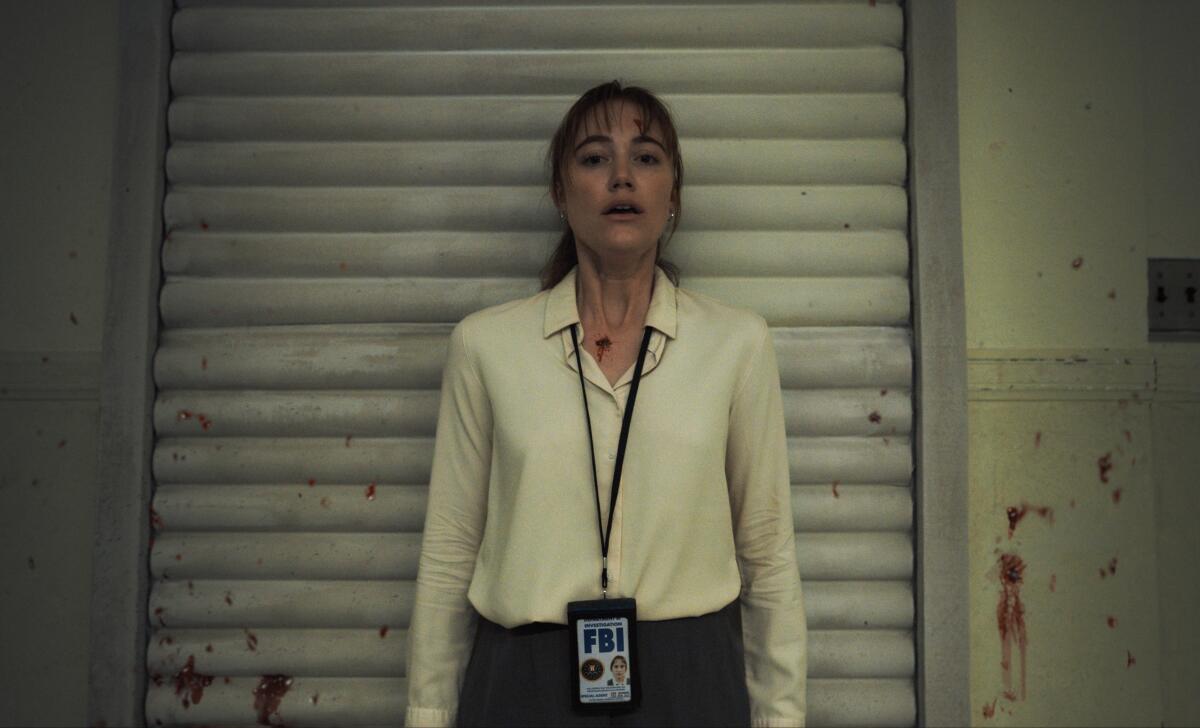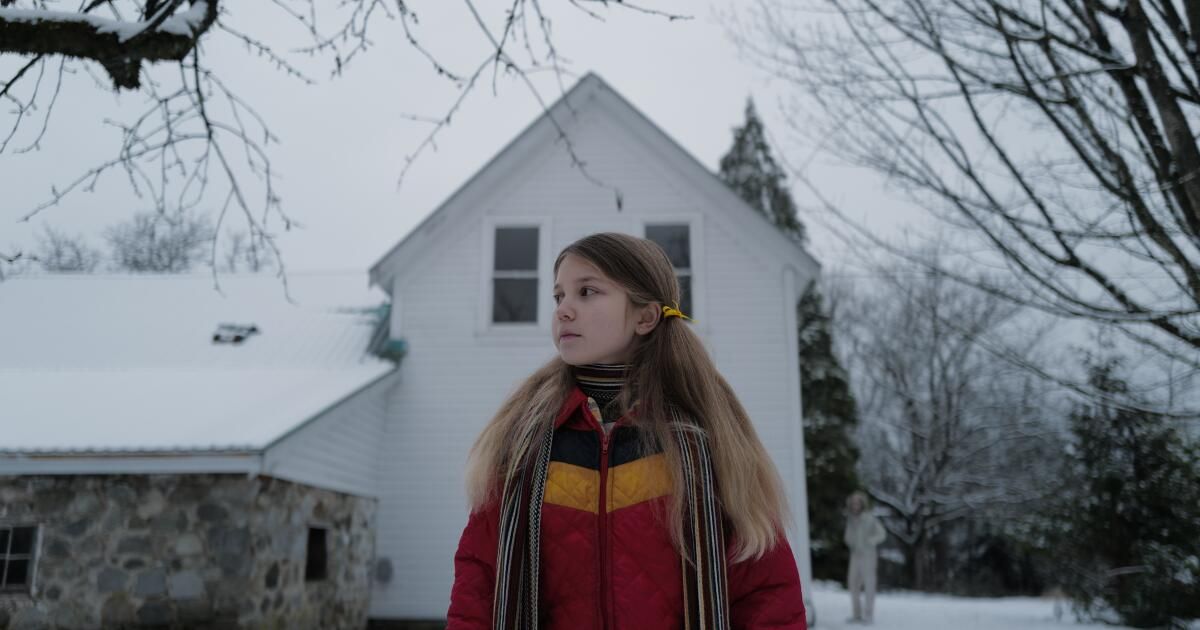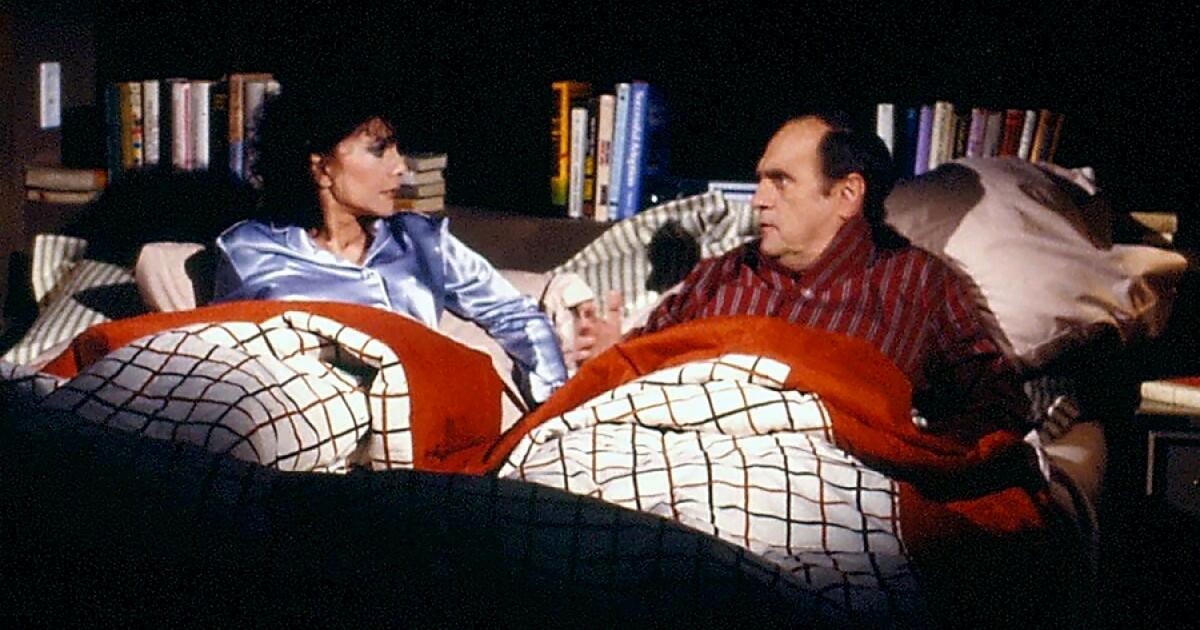Filmmaker Osgood Perkins’ haunting serial killer/occult/supernatural horror thriller “Longlegs” opens with a psyche-shaking sequence, barely a minute or two long, in which he creates a chilling sense of shock, wonder and humor simply through shot composition, editing and performance. It unsettles the viewer to the core, and the tension bursts like a bubble to a virtuoso music track.
It’s scary, just because of the way it’s presented formally, not necessarily because of any of the basic actions or images on screen, and it’s exciting because Perkins announces from the start his bold approach to tone, as well as his mastery of cinematic technique to create suspense. The tension never lets up throughout “Longlegs,” though it’s peppered with a dry, dark humor that somehow makes it all the more unsettling.
For the best viewing experience, it’s best to know as little about “Longlegs” as possible. In fact, if you think it’s an engaging cinematic experience (and it is), you can stop reading right now about a 100-minute, utterly unpredictable plot and sickening sense of dread mixed with dark humor, but we’ll move on, because “Longlegs” is too rich a text not to be analyzed a bit, and the obstacle course of writing about its true horrors is a challenge worth the effort.
Maika Monroe in the movie “Longlegs”.
(Neon)
Though it’s an easy comparison, “Longlegs” feels a bit like Perkins’ take on “The Silence of the Lambs,” in that it follows a young FBI agent as she plays cat-and-mouse with a serial killer (there’s also a shared enthusiasm for ’70s British rock on the part of our respective bogeymen). Special Agent Lee Harker (Maika Monroe) has the preternatural skill and drive of Clarice Starling, and both characters also fail to hide their vulnerability with toughness, albeit in different ways.
Harker is not a people person, but she is highly intuitive, perhaps even a little psychic. Special Agent Carter (Blair Underwood) recruits her for precisely that quality, to begin reinvestigating the unsolved case of a series of possibly related family murders in which a person named Long Legs has assumed some sort of distant responsibility through coded notes. As she delves deeper into her investigation, it is revealed that Harker is strangely connected to these cases. (Is she psychologically gifted, or is it memories?)
Nicolas Cage plays the oddball suspect in one of his most outlandish and unrecognizable performances. He's brilliant and clearly having a great time committing wholeheartedly to his crazy and terrifying decisions (though Cage has never failed to commit beyond his means in every performance). Alicia Witt also appears as Harker's mother, with whom the agent has a close but complicated relationship. Monroe, with a kind of mild-mannered sullenness, is the eye of the storm amidst these colorful characters, including her energetic boss Carter.
The performances work in concert with the surprisingly meticulous and precise filmmaking: Perkins, the son of “Psycho” star Anthony Perkins, has a wonderfully methodical eye for creating cinematic imagery and sound. With cinematographer Andrés Arochi working magic with the structure of light, Perkins centers Harker in carefully composed shots where she is dwarfed by her surroundings, emphasizing her smallness and sense of being overwhelmed. The camera alternates between objective observation of our protagonist and an alignment with her point of view and actions. Slow, stealthy zooms mimic her vision, and backward tracking shots continually drag her into danger, her gun always drawn.

Maika Monroe in the movie “Longlegs”.
(Neon)
The camera conveys an omniscient, sinister knowledge that cannot always be trusted (with echoes of Monroe’s “It Follows”), but the repeated shots and settings suggest connection and comparison between different characters over time, so there is an internal rhythm to the filmmaking even when the story defies traditional logic.
“Longlegs” is also a masterpiece of production design (by Danny Vermette) and set decoration (by Trevor Johnston) that suggests an era and a place (mid-1990s Oregon) and fills that world with pertinent visual information. Perkins also populates the cast with interesting and memorable supporting roles that make the world of “Longlegs” bigger, richer and stranger, and helps us better understand the characters by seeing how they interact with the world around them.
“Longlegs,” however, offers no easy answers about itself on a macro level. Watching it feels like a riddle, the movie itself is a code to be cracked, and by the time it’s over, the puzzle hasn’t been solved yet. That’s okay. Figuring it all out isn’t the point of a movie that offers such a delightful rollercoaster of bad vibes. Just hop on board and let Perkins guide you — the ride is worth it.
Katie Walsh is a film critic for the Tribune News Service.
'Long legs'
Classification: R, for bloody violence, disturbing images and some language.
Execution time: 1 hour, 41 minutes
Playing: Now in wide release












